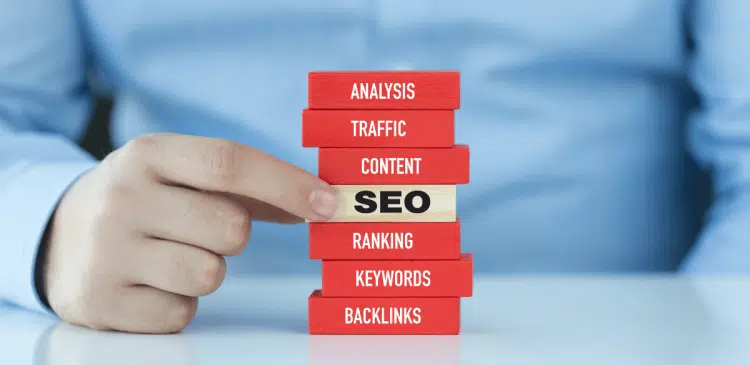How Do You Integrate SEO Into Your Content

Search Engine Optimization (SEO) is not about the use of keywords and backlinks but about producing content that people love and easy to understand by the search engines. SEO can be used effectively to make your content more visible to more people, generate organic traffic, and create an online reputation.
In case you are wondering how to apply SEO to your work, then this guide will provide you with easy, effective steps to make your writing easy to read and easy to be found by the search engine.
Understand What SEO Really Means
It is first prudent to understand what SEO entails before going into the actual process.
SEO (Search Engine Optimization) refers to the act of making your content be ranked higher in the search engine, like Google. The greater the rank of your content the more people will find and click on it.
SEO is not all about fooling the search engines. It is about matching your content with what the people are searching for. It implies knowing your audience, delivering true value and organizing your content in a way that makes it easy to read and locate.
Start With Keyword Research
The basis of SEO is the use of keywords. They are the words and phrases that people can enter on the search engines in search of information.
Why Keywords Matter
By using the same phrases that your target audience uses when they are searching, your content will have a higher probability of being included in their search.
How to Find the Right Keywords
Think like your audience: So, what would somebody type to come across your content?
Use keyword tools: You can find the relevant keywords with the help of free tools such as Google Keyword Planner, AnswerThePublic, or Uber suggest.
Focus on intent: Select the keywords that are relevant to what the users desire. To illustrate, when one types in how to make coffee at home, he/she does not want an advertisement for a coffee machine, he/she needs a guide.
Use Both Short and Long-Tail Keywords
Short-tail Keywords: 1-2 words (e.g., “SEO tips”). These are very competitive and have high search volume.
Long-tail keywords: 3-5 words (e.g., how to integrate SEO into content). It is simpler to rank them and reach a targeted audience.
Plan Your Content Around Your Keywords
After having your keywords, now plan out your contents.
Create a Content Outline
Sketch down your major and minor points and subtopics. This makes your writing to get coordinated and helps in making sure that you include everything your readers could be interested in knowing.
Make Your Keywords Fit Naturally
Do not impose key words in writing. The search engines have become contextual and therefore what you write should sound natural. When one keyword does not work, then use synonyms or related phrases.
Write for People First, Search Engines Second
This is among the most significant SEO guidelines.
Always in your writing, the reader must be first. The search engines give preference to pages that contain useful, coherent, and interesting information.
Tips to Write Reader-Friendly SEO Content
Write in short sentences and paragraphs: People are fond of fast and easy to digest content.
Include subheadings and headings: They render your content to be skimmable and enhance readability.
Use bullet points and lists: They aid in structure of thoughts and retain attention of the readers.
Be conversational: Write as though you were talking to a friend.
Keep in mind: it is not about gaming the system, but about helping people with your great SEO content.
Optimize On-Page Elements
On-page SEO is the content that you can directly manipulate in your page.
Title Tag
The title is the first thing that people see in search results. Insert your primary keyword at the start and use it in a way that is interesting.
Example:
Rather than Integrating SEO in Your Articles, go with How to Integrate SEO into Your Content the Easy Way.
Meta Description
The brief description on your title in search results is the meta description. It has to be informative, natural and you should have your key word.
Headings (H1, H2, H3)
You should use H1 tag as your main title, H2 and H3 tags as subtopics. This assists search engines to learn your content structure.
URL Structure
Make URLs short, simple and rich in keywords.
Example:
www.yourwebsite.com/integrate-seo-into-content
Image Optimization
Provide alt text and description to your images. This assists your images to be displayed in Google images and enhances access.
Create High-Quality, Valuable Content
The quality of writing cannot be covered by any amount of optimization on the keywords.
What Makes Content High-Quality?
Originality: Do not copy or repeat what is already in existence. Add your unique insights.
Breadth: Discuss your subject in detail to ensure that the reader does not have to consult other sources.
Precision: Be precise with information and fact-check.
Interaction: Cite examples, tales, and graphics to maintain the attention of the readers.
The more time the readers spend on your page, the search engines pay attention to it and reward you with high ranking.
Use Internal and External Links
One of the major aspects of SEO integration is links.
Internal Links
These are links to other pages of your web site. They assist search engines in knowing the way your content is related and retain customers on your site.
External Links
These are connections to reliable external sources. The connection with reputable sites demonstrates search engines that your material is reliable.
Make sure all links are relevant and add value to your reader’s experience.
Focus on Readability and User Experience
Search engines are interested in providing people with the best experience. That is, your content must be simple to view, use and access.
Keep These Tips in Mind:
Use simple language: Write at the 8th grade -10th grade reading level to reach as many people as possible.
Separate text and white space: No one is fond of lengthy passages.
Add visuals: Your content is more interesting with the use of images, infographics, and videos.
Ensure mobile-friendliness: A lot of Americans shop on their phones – your content must be attractive to all devices.
 Bill Yeager, Co-Owner of High Point SEO & Marketing in CT, is a leading SEO specialist, Amazon international best-selling author of the book Unleash Your Internal Drive, Facebook public figure, a marketing genius, and an authority in the digital space. He has been personally coached by Tony Robbins, a fire walker and a student of Dan Kennedy, Founder of Magnetic Marketing. Bill has been on several popular podcasts and the news including Sharkpreneur with Kevin Harrington, FOX, NBC, and ABC by way of his Secret Sauce marketing strategies. Bill enjoys fitness, cars, and spending time with his family when not at work.
Bill Yeager, Co-Owner of High Point SEO & Marketing in CT, is a leading SEO specialist, Amazon international best-selling author of the book Unleash Your Internal Drive, Facebook public figure, a marketing genius, and an authority in the digital space. He has been personally coached by Tony Robbins, a fire walker and a student of Dan Kennedy, Founder of Magnetic Marketing. Bill has been on several popular podcasts and the news including Sharkpreneur with Kevin Harrington, FOX, NBC, and ABC by way of his Secret Sauce marketing strategies. Bill enjoys fitness, cars, and spending time with his family when not at work.
